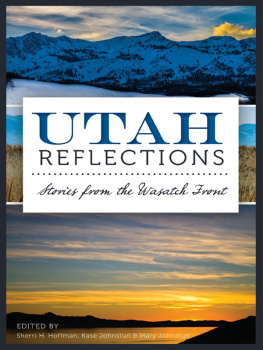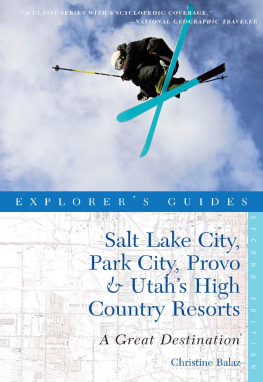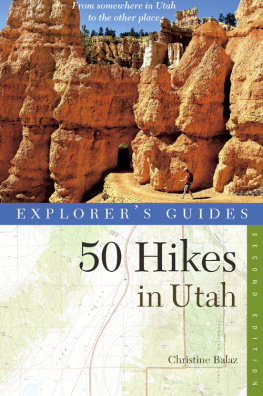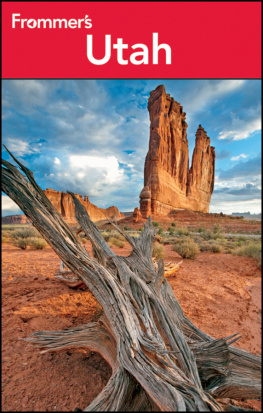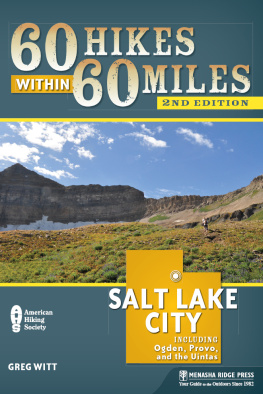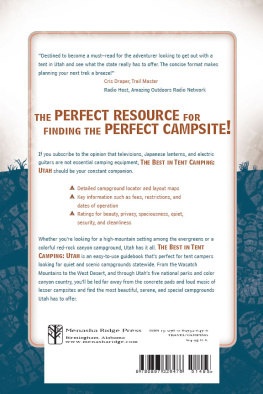

Published by The History Press
Charleston, SC 29403
www.historypress.net
Copyright 2014 by Sherri H. Hoffman, Kase Johnstun and Mary Johnstun
All rights reserved
The Pit Bull and the Mountain Goat from A Little More About Me by Pam Houston. Copyright 1999 by Pam Houston. Used by permission of W.W. Norton & Company, Inc.
Bald Eagles, excerpt(s) from Refuge: An Unnatural History of Family and Place by Terry Tempest Williams, copyright 1991 by Terry Tempest Williams. Used by permission of Pantheon Books, an imprint of the Knopf Doubleday Publishing Group, a division of Random House LLC. All rights reserved.
Looking for Spiral Jetty by Lance Larsen was the winner of the Writers at Work Nonfiction Prize and originally appeared in Quarterly West.
February 14 by Katharine Coles was originally published in Narrative.
Portions of The Curling Fingers of the Hatch Women by Jana Richman were originally printed in her biography Riding in the Shadow of Saints (Random House, 2006).
Cover photo credits to Jason Chacon, Dane Webster and Jen Henderson.
Lynn Kilpatricks author photo credit to Zoe Rodriguez (www.zoerodriguez.me/index.html). Terry Tempest Williamss author photo credit to Marion Ettlinger.
First published 2014
e-book edition 2014
ISBN 978.1.62584.832.1
Library of Congress Cataloging-in-Publication Data
Utah reflections : stories from the Wasatch Front / edited by Sherri H. Hoffman, Kase Johnstun and Mary Johnstun.
pages cm
print edition ISBN 978-1-62619-340-6 (paperback)
1. Wasatch Range (Utah and Idaho)--Description and travel--Anecdotes. 2. Wasatch Range (Utah and Idaho)--Geography--Anecdotes. 3. Wasatch Range (Utah and Idaho)--Social life and customs--Anecdotes. 4. Wasatch Range (Utah and Idaho)--Biography--Anecdotes. I. Hoffman, Sherri H. II. Johnstun, Kase. III. Johnstun, Mary (Mary VanLeeuwen)
F832.W22U83 2014
917.922--dc23
2014015886
Notice: The information in this book is true and complete to the best of our knowledge. It is offered without guarantee on the part of the author or The History Press. The author and The History Press disclaim all liability in connection with the use of this book.
All rights reserved. No part of this book may be reproduced or transmitted in any form whatsoever without prior written permission from the publisher except in the case of brief quotations embodied in critical articles and reviews.
CONTENTS
ACKNOWLEDGEMENTS
We would like to thank all the authors who contributed their hearts in the form of narratives and their photos that truly capture what it means to be a part of living in the Wasatch Front and Cache Valley.
We would like to thank Will McKay for his guidance and patience throughout and The History Press for its recognizing the value that this anthology brings to not only the literary world but also the people of the Wasatch Front and, hopefully, the many classrooms that could benefit from a collection of regional essays such as these.
Sherri would like to thank her husband, Rick, and her mother and father, DeVon and Dianne Hale, for all their support and guidance throughout.
Mary and Kase would like to thank Sherri for her hard work and dedication to this project and Lukas Diego for being a big kid and showing his mom and dad all the wonderful reasons to raise their boy along the Wasatch Front.
INTRODUCTION
I was born in the Salt Lake Valley at the Catholic hospital, Holy Cross. My parents were recent graduates from the University of Utah, and my dad was just starting medical school. To this day, theyll point out the basement apartment with windows that peek up along the foundation of the Second Avenue house where they took me as an infant from the hospital and snuggled me into a bureau drawer that served as a bassinet. Along the east bench near where they live now, the air shifts with the seasons, summer heat and winter cold, and on your tongue, the salt of black-flecked rock, scrub oak, sage and dry grass and spring rains that carry the smell of faraway snow.
At night, the streets glitter in a geometric grid hung with yellow lights, the boxy demarcation of commerce, schools and neighborhoods. The bright center of the city is the Mormon temple, a massive angular construct of granite with six spires, an angel mounted to the uppermost point, facing east, mouth affixed to a golden trumpet. When I was a little girl, my father told me the angel was Harry James, the famous jazz trumpeter from the big band era. Of course, I knew the Mormon angel was called Moroni, herald to the second coming of their Savior, but I wanted to believe it was about the music. From the east bench, the golden angel marks the nexus of the valleydark, abrupt mountains of the Wasatch Front to the east, Great Salt Lake to the westand the valley itself evokes both a density of populace and a vastness of open space.
Thats the paradox of the Wasatch Frontwhat it contains alongside that which it cannot contain. Granite peaks rise from the distinct shelf cut by the prehistoric pluvial lake where seashells and fossilized sea creatures can still be found above 4,500 feet. Glacial-carved canyons open onto wide city blocks inhabited by architectural monuments built of local stone and buildings from which at any time you may spot urbanized mule deer, coyotes, water fowl or raptors or an occasional moose. The local industries boast master craftsmen, research and technology, mining, farming and water management in this high-mountain desert. The mountain peaks are capped with snow envied worldwide, and to the west is the largest saltwater lake in the Western Hemisphere.

Wellsville mountains above the Cache Valley. Photo credit Danel W. Bachman.
The essays, stories and poetry collected here embrace the paradox of this place. It is the home to which we return and the home we never left. A bounty rich with traditions and sustenance, physically and spiritually. A geographic anomaly of minerals, earth, rock and elements settled by folks seeking the common aspirations of every peoplea roof over their heads, a plot of land, space to raise up children and the freedom to worship as they believe. It is a place of wilderness and amenity. Of harsh weather and ebullient outdoor sports. Of rock and water. Salt and faith.
The geographic journey extends far beyond the old highways that ride the shoulders of the Front, past the lakefronts and the climbing canyonsProvo, Ogden, Logan, Big or Little Cottonwood, Millcreek or Emigration. When I was a teenager, my family lived in southern Idaho, and on every car trip to and from my Uncle Johns dairy farm in Benson, Utah, my father identified the alluvial gap in Red Rock Pass that released the ancient Lake Bonneville into the Snake River system, flooding what is now the Columbia Gorge in the Pacific Northwest. That gap remains a familial marker, the gateway into the fabulous world of my uncles farm where our grown-up cousins would take us to the banks of the Bear River on ATVs, haul us in the tractors as they fed the herds of ponderous Holsteins and enlist our clumsy skills to bottle-feed the bawling calves.
The Wasatch Front is resplendent with those geographic touchstones that coalesce into memory: fruit stands and drive-ins, vegetable gardens, cherry orchards and the heart-stopping white wood-frame roller coaster at Lagoon. Old pathways return us to places of our childhoods, families and the reminiscent fullness of the Wasatch Front as renewal or memorial. Or discovery. Ill admit, in all the years I lived in Utah as an adultthrough college and a first marriageId never heard of the massive art installation in the lake near Rozel Point, less than forty miles as the crow flies from the home in Roy where I grew my own vegetables and fruit in the backyard. I knew no art installation, but my garden was as commonplace as a front dooreveryone had one. Even if the structures are different, the
Next page
